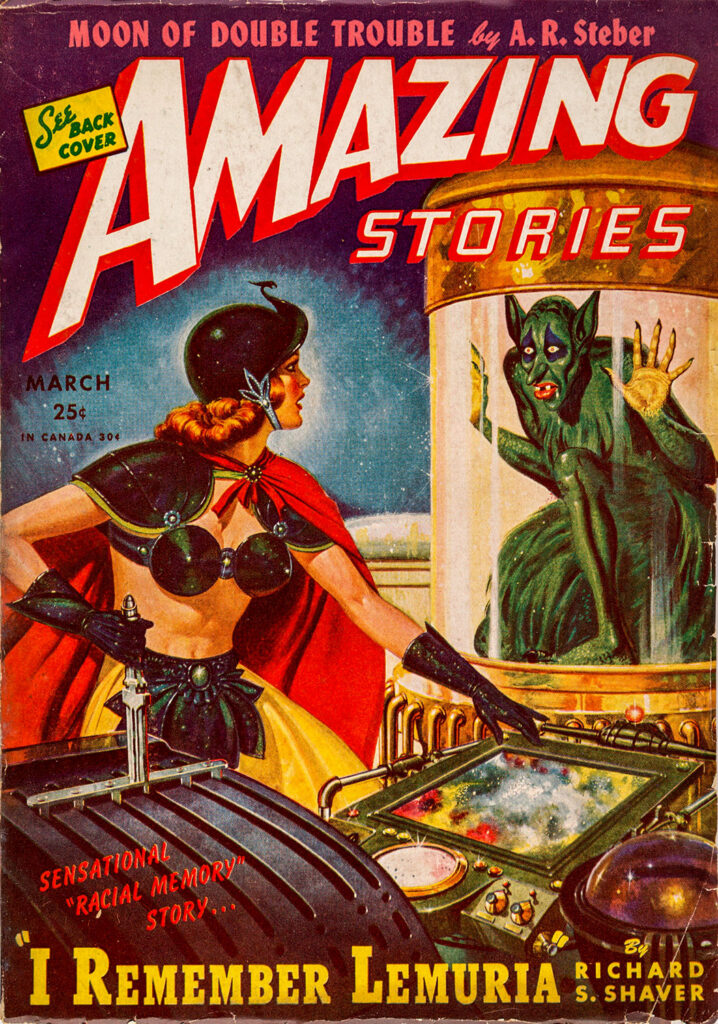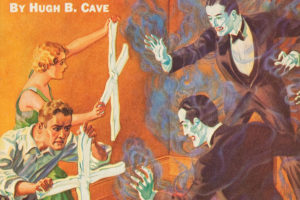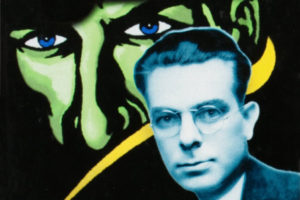The editor of ‘Amazing Stories’ helped popularize the wild theories of Richard Shaver
Some people are by nature gullible, believing in conspiracies where none exist and especially in government cover-ups. Sunken continents such as Atlantis and Mu, assorted sea serpents from Loch Ness thriving today in Scotland or Lake Ogopogo in Canada. Abominable Snowmen or Bigfoot traipsing about the Pacific Northwest and Yetis in the Himalayas.
These and other oddities became bestsellers for writers from the late 19th century through to the 1960s. Charles Fort popularized strange science in the early 1920s with his collections of weird newspaper clippings in The Book of the Damned, Lo!, New Lands, and Wild Talents. In the late 1960s, a German promoter, Erich von Daniken, linked a few theories together and came up with early civilizations and “ancient astronauts” in Chariots of the Gods, Gods From Outer Space, and In Search of Ancient Gods.

Then Edgar Rice Burroughs wrote his Pellucidar series and later took Tarzan to the inner earth. (“Pellucidar,” first serialized in four issues of All-Story, starting with the April 4, 1914, issue; “Tanar of Pellucidar”; “Savage Pellucidar”; “Back to the Stone Age”; “Land of Terror”; and “Tarzan at the Earth’s Core.”)
Fanzine flashback
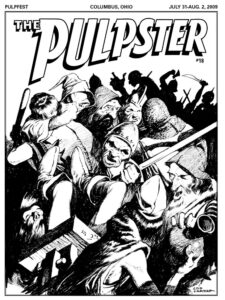 This article originally appeared in The Pulpster (No. 18; July/August 2009) for PulpFest 2009
This article originally appeared in The Pulpster (No. 18; July/August 2009) for PulpFest 2009
But it was Raymond Arthur Palmer, editor of Amazing Stories from 1938 to 1949 (also Fantastic Adventures, Other Worlds, Imagination, and Fate — the latter three digests under Clark Publishing Co.), to really popularize and bring together many of these wild theories, all starting with a rambling correspondence from a believer in the hollow earth to create what is popularly known as “The Shaver Mystery.”
Palmer, for all the criticisms leveled at him, was an astute judge of what the public wanted to read, and close to 30 Shaver tales printed in Amazing Stories increased readership for the pulp and good circulation numbers for publisher Ziff-Davis.
Palmer was a fan of Amazing Stories and sent numerous stories that ended up being rejected. But his first submission was successful. He writes:
When I first decided to be a writer, I had to begin by dealing in fantasy which came naturally to me because of my wild imagination. In 1926, Hugo Gernsback brought out the first science-fiction magazine called Amazing Stories and when I saw the first issue on the newsstands, I snatched it up. The same day I sent my story to him for consideration for the magazine. My first story, I realized was science fiction. The story sold for $40, and it was published some years later in a magazine called Science Wonder Stories.
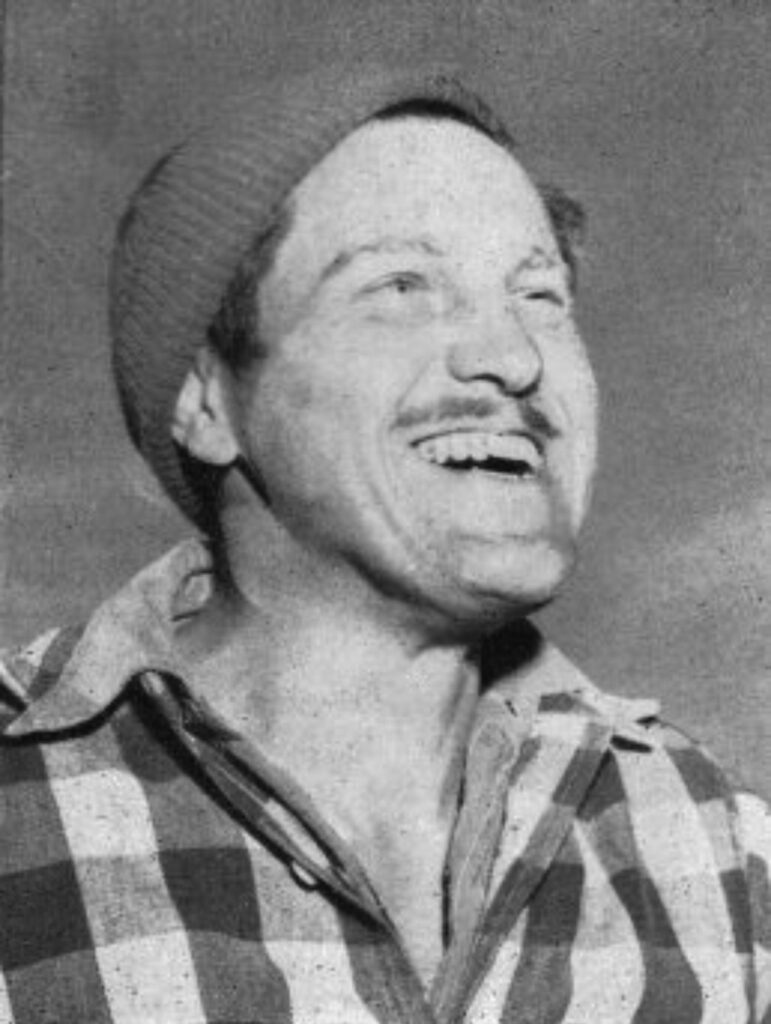
Richard Sharpe Shaver, born in 1907 in Berwick, Penn., had an unsettled early life, sometimes engaging in a transient lifestyle.
He is said to have made some apparently paranoid claims about telepathy and evil deeds being committed in underground caves. It is also claimed that he was hospitalized in Michigan for psychiatric issues during the 1930s.
Shaver’s claim to “fame” came in 1943 when he wrote a rambling letter to Amazing Stories, claiming that he had uncovered an ancient language called “Mantog,” and that this language could be decoded to reveal all sorts of hidden meanings.
Ray Palmer wrote about Shaver’s letter in 1961:
I had free rein with the pulps, and answerable to no one except Mr. Davis [of Ziff-Davis]. Thus when one day a letter came in giving the details of an “ancient alphabet” that “should not be lost to the world,” it was opened by my managing editor, Howard Browne, who read it with typical orthodox attitude and tossed it into the wastepaper basket with the comment, “The world is full of crackpots.” I retrieved the letter from the wastebasket, examined the alphabet, and made a few casual experiments. I went about the office to those who were familiar with other languages than English, and came up with a few more interesting results. That was enough. I published the letter in Amazing Stories.
[Mantog, it seems, is claimed to be a precursor to many modern languages, thus it lends itself to many interpretations. — Ed.]
Shaver tales in ‘Amazing Stories’
Beginning in 1945, Richard Shaver’s tales (likely all ghosted by editor Ray Palmer) appeared in the following issues of Amazing Stories:
- 1945: March, June, September, December
- 1946: February, May, June, July, August, September, November, December
- 1947: January, March, May, June, August, December
- 1948: March, May, June, September, December
- 1949: January, May, July, September, November, December
- 1950: January
Associate editor Browne also later describes Shaver’s letter to Amazing:
Early in the 1940s, a letter came to us from Dick Shaver purporting to reveal the “truth” about a race of freaks, called “Deros,” living under the surface of the earth. Ray Palmer read it, handed it to me for comment. I read a third of it, tossed it in the waste basket. Ray, who loved to show his editors a trick or two about the business, fished it out of the basket, ran it in Amazing, and a flood of mail poured in from readers who insisted every word was true because they’d been plagued by Deros for years.
Palmer, seemingly willing to entertain Shaver’s message, printed the letter in the readers’ department letters column of Amazing Stories in December 1943. It reads as follows:
Sirs, Am sending this in hope you will insert it in an issue to keep from dying with me. It would arouse a lot of discussion. Am sending you the language so that sometime you can have it looked at by some one in the college or a friend who is a student of antique times. The language seems to me to be definite proof of the Atlantean legend. A great number of our English words have come down intact as romantic — ro man tic — “science of man patterning by control,” Trocadero — I ro see a dero — “good one see a bad one,” applied now together. It is an immensely important find, suggesting the god legends have a base in some wise race than modern man, but to understand it takes a good head as it contains multi-thoughts like many puns on the same subject. It is too deep for ordinary man — who thinks it is a mistake. A little study reveals ancient words in English occurring many times. It should be saved and placed in wise hands. I can’t, will you? It really has an immense significance, and will perhaps put me right in your thoughts again if you will really undertand this.
I need a little encouragement.
Accompanying the letter was the so-called “Mantong” alphabet. Palmer also added his editorial views on the subject:
We present this interesting letter, concerning an ancient language with no comment except to say that we applied the letter-meaning to the individual letter of many old root words and proper names and got an amazing “sense” out of them. Perhaps if readers interested were to apply his formula to more of these root words, we will be able to discover if the formula applies… is this formula the basis of one of the most ancient languages on Earth? The mystery intrigues us very much.
Reader response to the Shaver letter and Palmer’s comments was reportedly very positive. So, Palmer wrote to Shaver requesting more information, and Shaver, in turn, sent back a 10,000-word piece titled “A Warning to Future Man.” Shaver took the article and converted it himself into a 31,000-word story called “I Remember Lemuria!,” which appeared in the March 1945 issue of Amazing Stories. The Shaver Mystery was now in full swing.
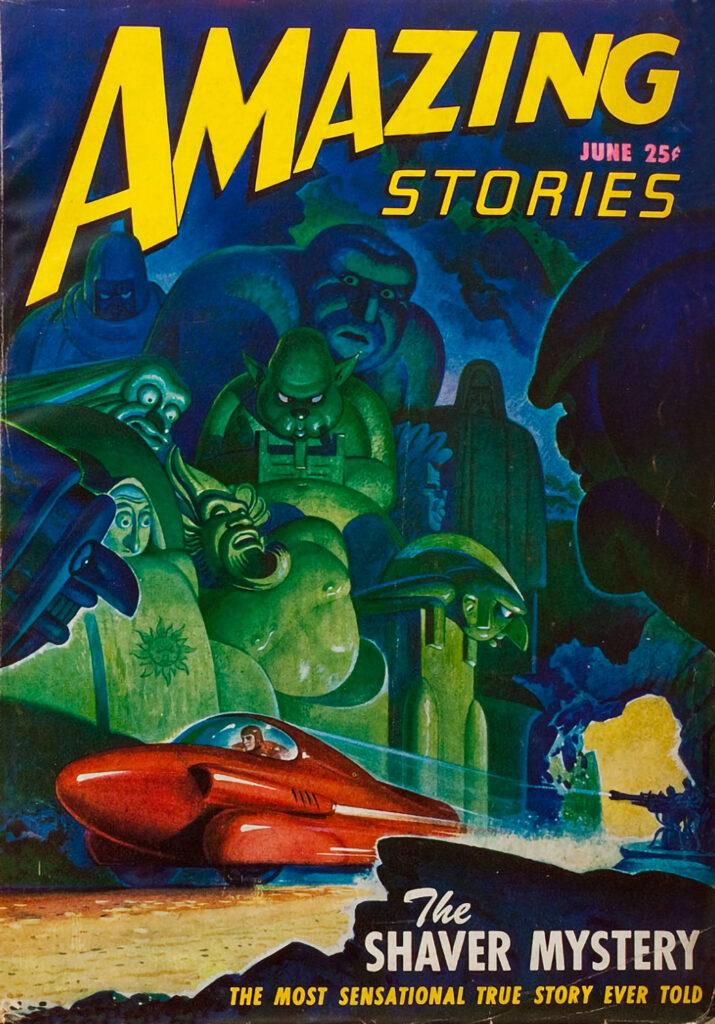 How much of “I Remember Lemuria!” is Shaver’s and how much is Palmer’s is difficult to ascertain.
How much of “I Remember Lemuria!” is Shaver’s and how much is Palmer’s is difficult to ascertain.
The story relates how an alien race called the Titan-Atlans came to Earth over 12,000 years ago, settling on the continent of Atlantis, and spreading their culture worldwide. They created machinery and robot-like beings to do their labor, and communicated telepathically. These beings, finding that the sun’s radioactive rays were harmful to them, constructed huge cities underground, creating a vast network of cities and roadways.
They eventually decided to abandon the Earth, but others were left behind. Over time, some degenerated and became the Deros — or detrimental robots. These aren’t literal “robots,” but beings controlled by degenerative forces who do harm to others.
The Deros, using many of the special machines also left behind, cause endless trouble for the human species living above ground. They have teleportation units, aerial craft, and death rays. They can create dreams or illusions, and abduct humans who are dragged underground and submitted to horrible deeds. There were also some good beings left over from the mass exodus, who Shaver calls “Teros,” who try to combat the wicked ways of the Deros.
Palmer claimed fantastic circulation for “I Remember Lemuria!” and more Shaver stories started appearing in the pages of Amazing Stories from 1945 until January 1950. Palmer printed numerous readers’ letters from people who endorsed the Shaver saga, some claiming that they too knew about the Deros and had travelled underground and seen such cities.
“I Remember Lemuria!” would be published as a novel by Venture Books of Evanston, Ill., and be reviewed in the August 1950 issue of Amazing Stories. Reviewer “Morris Tish” writes:
Richard Shaver and his stories have been the focal point for many controversies. With these the readers of Amazing Stories are of course familiar, and the reaction has been mixed. Of those who are familiar with his writings, some scoff, some believe, and some merely wonder. Certainly, Shaver has raised many interesting problems, problems which deserve consideration, and to a certain extent, have received it. Indeed, the Shaver controversy has reached as far as the Atlantic Monthly where an article recently appeared concerning the veracity of Shaver’s ideas!
Those who are curious about the “Shaver Mystery” can satisfy a great deal of their curiosity by reading “I Remember Lemuria,” one of the most informative and idea-packed stories that Shaver has written, and its sequel, “The Return of Sathanas,” published together in one volume by Venture Books. Both stories are concerned with the adventures of Mutan Mion, an ancient being from a prehistoric civilization for whom Shaver claims to be the racial memory receptacle. In the ancient language which Shaver presents in some of his stories, and which he claims to be the mother tongue of all Earthly languages, Mutan Mion means “Man spore cultured to new forms of integration growth forces.” In “I Remember Lemuria,” Mutan tells the story of the ancient cities of Lemuria, of which he was an inhabitant and describes life in these cities. In “The Return of Sathanas,” Mutan grapples with the evil god Sathanas (or Satan as we know him) with a titanic struggle resulting. Other characters besides Mutan, such as Arl and Vanue, play a prominent part in both stories. The Lemurian alphabet, given at the back of the book, is designed to give the reader a better understanding of the stories.
“I Remember Lemuria” should attract considerable interest from readers who are interested in fantasy. The “Shaverites” will certainly want to own this book, as it is thus far the “Master’s” only appearance in hard covers. The skeptics will also desire this volume, simply as a record of one of the oddest crazes of recent years. The undecided will want this book to help them mull over Shaver’s ideas. Whatever the point of view then, the publication of this volume will prove of interest to a large segment of readers.
Palmer claimed the March 1945 issue of Amazing Stories sold out, and later stories by Shaver in the pulp resulted in increased sales. Ziff-Davis reportedly had to divert paper supplies from their other publications due to wartime paper shortages in order to meet circulation demands for Amazing.
From the low circulation of about 25,000 when Gernsback sold Amazing Stories in 1938, the pulp was selling some 250,000 copies by the end of 1945, and the letters pages from its readers expanded as well.
Howard Browne later recalled that Palmer travelled to meet with Shaver in Pennsylvania, where he “found him sitting on reams of stuff he’d written about the Deros, bought every bit of it and contracted for more. I thought it was the sickest crap I’d run into. Palmer ran it and doubled the circulation of Amazing within four months.”
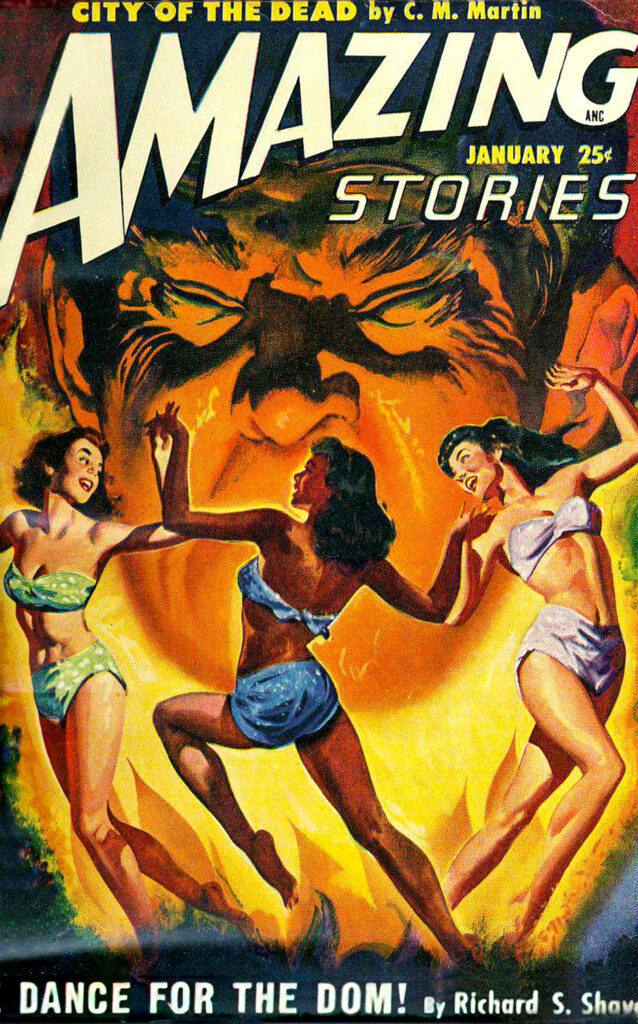 Reader response to the Shaver Mystery in the letters’ pages ranged from science-fiction fans who were critical of the direction Amazing Stories was taking, while others (the majority of those who had letters printed) added their own contributions to the hollow earth tales, and some vented their own seemingly paranoid views of having Deros as neighbors or themselves experiencing hazardous adventures underground. Pulp editors were noted for getting staff to create letters, but in this case, there likely were many believers in the Shaver Mystery.
Reader response to the Shaver Mystery in the letters’ pages ranged from science-fiction fans who were critical of the direction Amazing Stories was taking, while others (the majority of those who had letters printed) added their own contributions to the hollow earth tales, and some vented their own seemingly paranoid views of having Deros as neighbors or themselves experiencing hazardous adventures underground. Pulp editors were noted for getting staff to create letters, but in this case, there likely were many believers in the Shaver Mystery.
There are various opinions as to why the Shaver Mystery tales were discontinued in spite of a healthy circulation. One view is that publisher William B. Ziff had tired of taking flak from business associates and advertisers. Another opinion is that the once loyal science-fiction fan base and readership of Amazing Stories were highly critical of this hokum. The pulp’s new readership was certainly widespread but not sf-based.
Whatever the real reason, Palmer quit working for Ziff-Davis and later brought out his own sf publications, as well as a magazine devoted to unidentified flying objects, aptly named Flying Saucers. Pilot Kenneth Arnold’s claimed sighting of a “flying disc” near Mount Rainer in Washington state in June 1947 brought UFOs into the Shaver Mystery saga. What better base on earth for flying saucers than underground? Palmer’s Fate magazine actively promoted the UFO phenomenon. Palmer died in 1977.
Shaver passed away in 1975, convinced of his hollow-world revelations. He continued corresponding with those who wrote to him, and still created his own paintings of strange goings-on underground. (Shaver’s paintings reportedly included many nudes and some of his hollow-world tales included overt sexual overtones which Palmer wisely edited out or rewrote.)
About the author
Tony Davis is a long-time fan of the pulps, the 1999 Lamont Award winner, and editor emeritus of The Pulpster.


